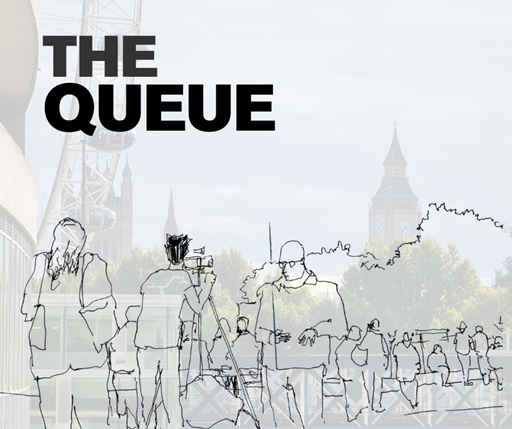Who was who in The Queue
-
Date
Thu 22 Sep 22

There has been much speculation about who joined the queue to see The Queen lying in state and why, but little evidence. That is, until University of Essex researchers began a survey using the kinds of methods developed for studying protests to find out why people were queuing.
A team of student researchers from the Department of Government led by Professor Rob Johns went to London to ask people in the queue why they had come.
Professor Robert Johns said: “When I heard endless speculation about the queue on the radio, I thought this is a time when the country needs social science, so I put together a systematic study to find out two things: who were these people in the queue, and what had brought them here?”
Every ninth person in the queue was given an online survey to complete while they waited. Over a thousand surveys were handed out and 600 were completed over three days.
Professor Johns said: “The queue is more reflective of Britain than you might think. All age groups are represented, not far off their proportions, the queue is 57% female.
“We were surprised by how diverse the queue was in terms of age and that it was broadly representative of the population in gender, social class and ethnicity terms. It was also a surprisingly liberal queue which perhaps demonstrates that the Monarchy goes deeper than the obvious flag-waving that is seen at other royal events such as jubilees or weddings. But it was also more of a Conservative queue than a conservative queue. 56% (of those who’d vote) said they would vote Conservative if there were an election tomorrow, yet the proportion supporting the death penalty was lower than in the population as a whole.
“We also wanted to find out whether ‘mourners’ was the right term for those who had come. People did not seem outwardly sad. In answer to our survey question ‘Right now, while in the queue, how far are you experiencing any of these emotions?’, we found that a kind of calm contentment – even excitement – trumped the more mournful feelings. In short, gratitude rather than grief came out as the main reason for coming. Being there at a historic moment was as important as Queen-specific motivations, and things like ‘feel part of a wider group’ were deemed important by plenty of queuers.
“One thing that few in the queue were mourning was the past. Queuers were on average quite a lot less nostalgic than the British public. When asked if ‘Things in Britain were better in the past’, less than a quarter of the queue agreed.”
The image for this story is a sketch by an artist while Professor Johns was being interviewed by Canadian television.
The findings will be written up in an upcoming blog and two academic articles.
.jpg?mh=500&mw=500&hash=6568B6C9CCF5290A596BEF6678B6AD0E)



